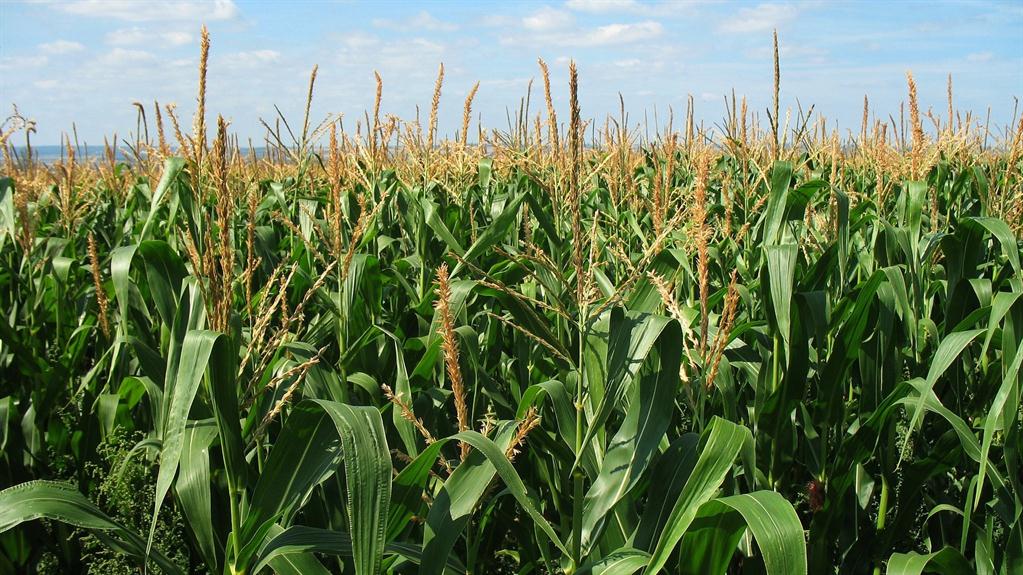Bumper cereal harvest
Maize production in the commercial farming areas showed a considerable improvement of 55 800 tonnes, which is 94% higher than last season's harvest of 28 800 tonnes and 29% above the average production of 43 200 tonnes.
ELLANIE SMIT
WINDHOEK
Revised crop estimates for the 2019/2020 season indicate a considerable improvement in the country's cereal production.
After favourable conditions experienced during the 2019/2020 cropping season, the aggregate cereal estimates show that the country has produced about 174 900 tonnes of crops.
This is 270% higher than last season's poor harvest of 47 300 tonnes and 41% above the average production of 124 000 tonnes.
This is according to the Post-Harvest Crop and Household Food Security Monitoring Assessments conducted by the agriculture ministry in the seven northern communal crop-producing regions from 26 May to 22 June 2020.
The report released last week added that all the crop-producing regions recorded a bumper harvest, which enhanced household food security.
Armyworm
Maize production in the communal areas, which includes the Zambezi, Kavango East and Kavango West regions, showed a massive improvement of 8 300 tonnes, which is about 525% higher than last season's poor harvest of 1 300 tonnes and 24% above the average production of 6 600 tonnes.
Much of this improvement was from the Zambezi Region which recorded 8 1 50 tonnes, an increase of 59% above the average production and 540% over last season's poor harvest.
In the Kavango East and Kavango West regions, maize production was estimated at 107 tonnes, an improvement of 128% on last season's harvest, but only 91% of the average production.
The report noted that farmers attributed the below-average maize production to outbreaks of fall armyworm and less maize than usual being planted this season.
Commercial maize
Maize production in the commercial farming area showed a considerable improvement of 55 800 tonnes, which is 94% higher than last season's harvest of 28 800 tonnes and 29% above the average production of 43 200 tonnes.
According to the report, this improvement was because of a recovery in dryland maize production.
“It is important to note that about 52% (33 456 tonnes) of the total maize production (64 039 tonnes) came from rain-fed production, while 48% (30 583 tonnes) came from irrigation schemes,” the report added.
Furthermore, pearl millet production was estimated at 95 100 tonnes, which is about 926% higher than last season's poor harvest of 9 300 tonnes, and 65% above the average production of 57 500 tonnes.
A total of 3 400 tonnes of sorghum was harvested, which is about 788% more than last season's poor harvest of 0.4 tonnes, but 51% below the average production of 7 100 tonnes.
The below-average production was attributed to seed shortages.
Wheat is a winter crop which is only produced commercially.
This year's wheat harvest is estimated at 12 300 tonnes, which is 63% above last season's harvest of 7 500 tonnes and 29% above the average production of 6 900 tonnes.
WINDHOEK
Revised crop estimates for the 2019/2020 season indicate a considerable improvement in the country's cereal production.
After favourable conditions experienced during the 2019/2020 cropping season, the aggregate cereal estimates show that the country has produced about 174 900 tonnes of crops.
This is 270% higher than last season's poor harvest of 47 300 tonnes and 41% above the average production of 124 000 tonnes.
This is according to the Post-Harvest Crop and Household Food Security Monitoring Assessments conducted by the agriculture ministry in the seven northern communal crop-producing regions from 26 May to 22 June 2020.
The report released last week added that all the crop-producing regions recorded a bumper harvest, which enhanced household food security.
Armyworm
Maize production in the communal areas, which includes the Zambezi, Kavango East and Kavango West regions, showed a massive improvement of 8 300 tonnes, which is about 525% higher than last season's poor harvest of 1 300 tonnes and 24% above the average production of 6 600 tonnes.
Much of this improvement was from the Zambezi Region which recorded 8 1 50 tonnes, an increase of 59% above the average production and 540% over last season's poor harvest.
In the Kavango East and Kavango West regions, maize production was estimated at 107 tonnes, an improvement of 128% on last season's harvest, but only 91% of the average production.
The report noted that farmers attributed the below-average maize production to outbreaks of fall armyworm and less maize than usual being planted this season.
Commercial maize
Maize production in the commercial farming area showed a considerable improvement of 55 800 tonnes, which is 94% higher than last season's harvest of 28 800 tonnes and 29% above the average production of 43 200 tonnes.
According to the report, this improvement was because of a recovery in dryland maize production.
“It is important to note that about 52% (33 456 tonnes) of the total maize production (64 039 tonnes) came from rain-fed production, while 48% (30 583 tonnes) came from irrigation schemes,” the report added.
Furthermore, pearl millet production was estimated at 95 100 tonnes, which is about 926% higher than last season's poor harvest of 9 300 tonnes, and 65% above the average production of 57 500 tonnes.
A total of 3 400 tonnes of sorghum was harvested, which is about 788% more than last season's poor harvest of 0.4 tonnes, but 51% below the average production of 7 100 tonnes.
The below-average production was attributed to seed shortages.
Wheat is a winter crop which is only produced commercially.
This year's wheat harvest is estimated at 12 300 tonnes, which is 63% above last season's harvest of 7 500 tonnes and 29% above the average production of 6 900 tonnes.





Comments
Namibian Sun
No comments have been left on this article